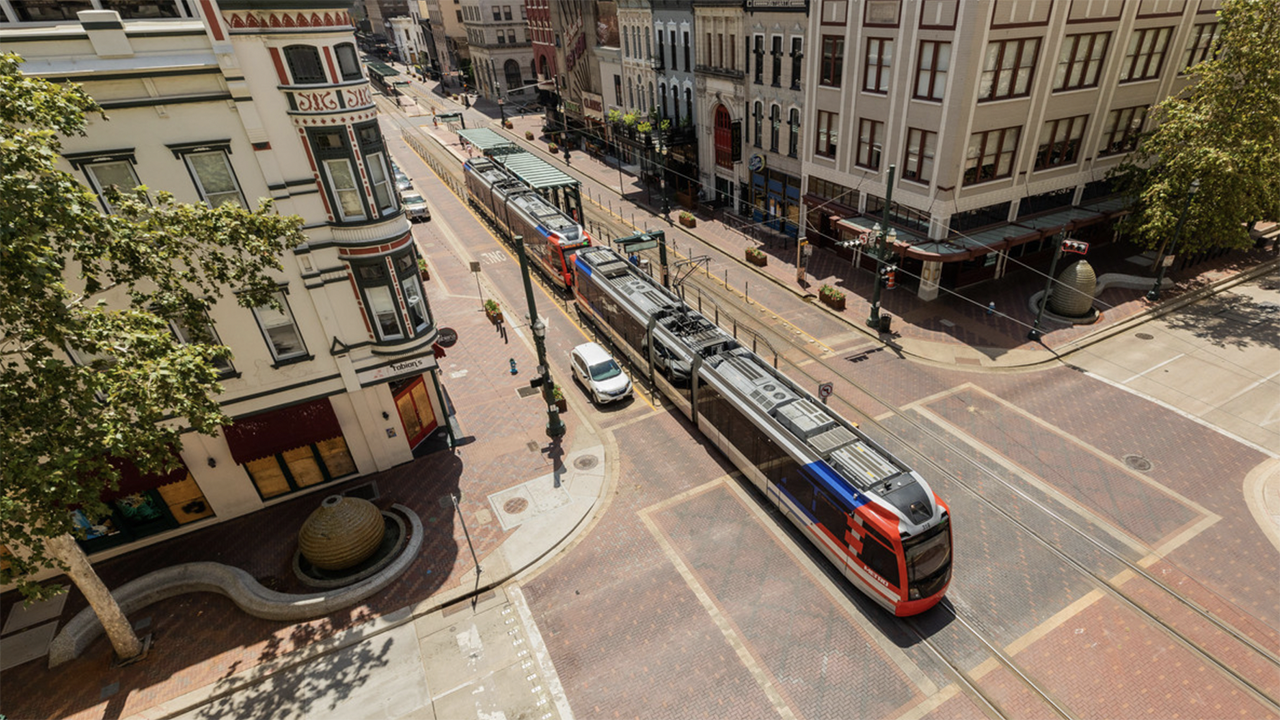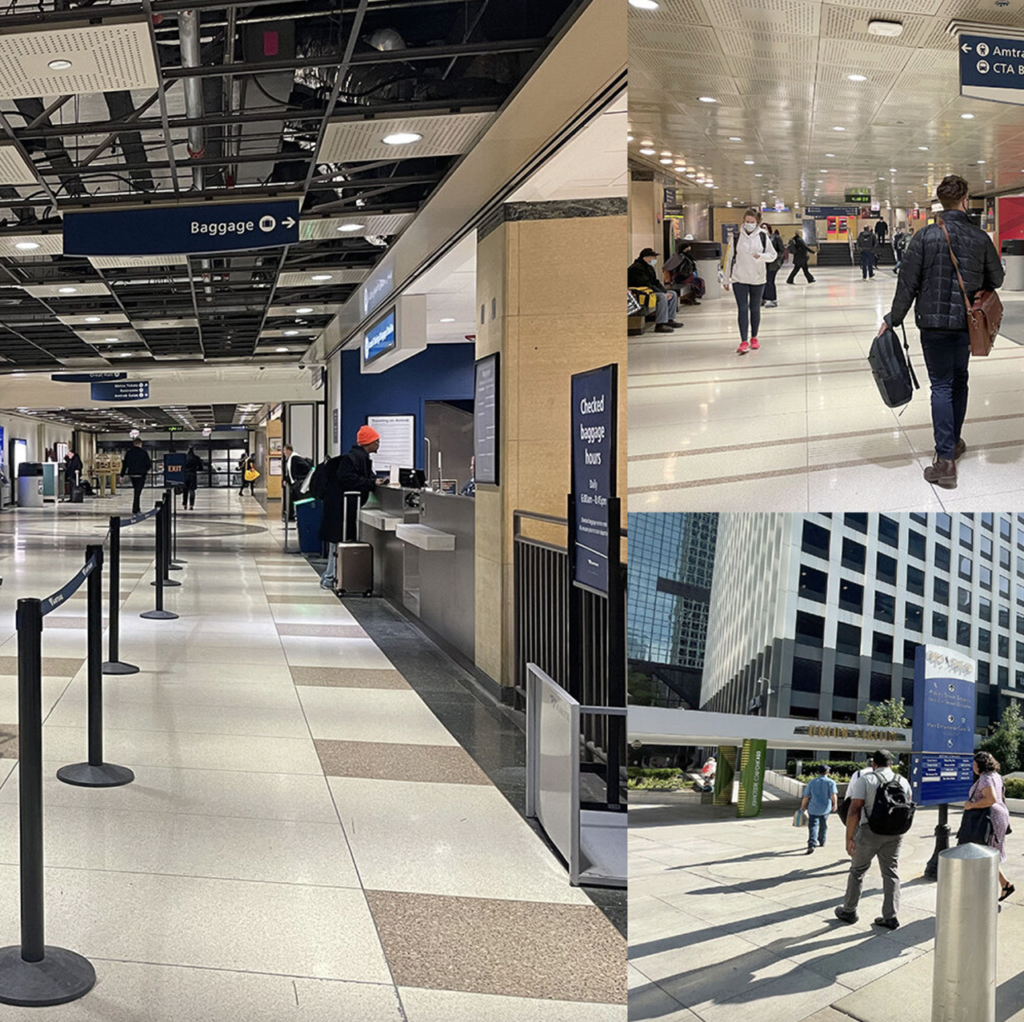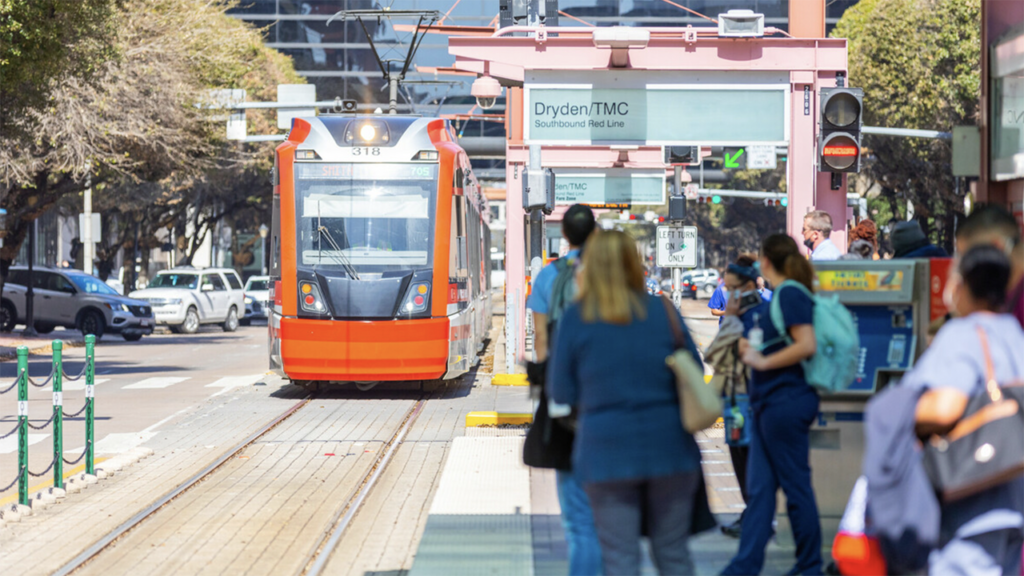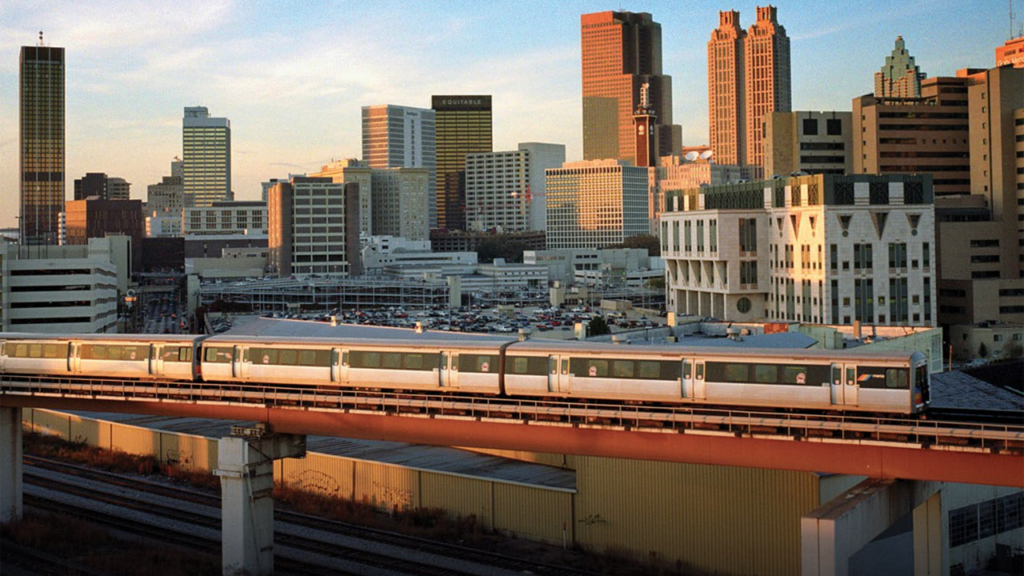
Transit Briefs: Amtrak, Houston METRORail, MARTA, MTA (Maryland)
Written by Marybeth Luczak, Executive Editor
METRORail marks 20 years of light rail service in Houston, Tex. (METRO)
Amtrak seeks feedback on Chicago Union Station concourse improvements. Also, Houston (Tex.) METRORail marks 20 years of light rail service; Federal Transit Administration (FTA) completes its triennial review of Metropolitan Atlanta Rapid Transit Authority (MARTA); and Maryland Transit Administration’s (MTA) Chief Administrative Officer earns the WTS Rosa Parks Diversity Leadership Award.
Amtrak

Amtrak is kicking off its concourse redesign project for Chicago Union Station by calling on the traveling public, other station users and area residents to provide their ideas on boarding-process improvements, amenity upgrades, and service additions. A survey is open through the end of January to offer feedback.
This will be the first major enhancement at track level and above since 1991 in a station that serves tens of thousands of Amtrak and Metra commuter railroad riders daily, according to “America’s Railroad,” which owns the station.
Built in 1971 replacing “the soaring steel and glass structure that once stood in its place,” the Concourse Building at Chicago Union Station does not meet the demands of a modern train station, the railroad reported.
Amtrak had an annual passenger count of 2.3 million in Chicago when the current concourse design was finished 32 years ago. In 2019, that total was 3.3 million, with new routes to and from Chicago in development in Illinois, Wisconsin and Minnesota, among other Amtrak MidwestSM states. Annual Metra ridership, over the same period at Chicago Union Station, has grown from 26.6 million to 32.6 million.
The new design is slated to reduce congestion, improve wayfinding, expand restroom capacity, and improve the Amtrak and Metra commuter railroad passenger waiting and boarding areas. Amtrak said that the renovation will incorporate “contemporary thinking around sustainability, inclusivity and universal design.”
Leading the design team is Chicago-based Epstein, in partnership with New York-based FXCollaborative. According to Amtrak, Epstein designed the $26.5 million Terminal 5 concessions area in Chicago O’Hare International Airport; Tunnel and Restroom Modernization at O’Hare; and Terminal Redevelopment at Chicago Midway International Airport. FXCollaborative designed the recently opened $24 million Amtrak Metropolitan Lounge and Office Complex in the Moynihan Train Hall for the Amtrak-owned New York Penn Station. Both firms worked together to complete the renovation and expansion to the Jacob K. Javits Convention Center in New York.
According to Amtrak, Epstein is committed to achieving the railroad’s goal of 28.2% DBE/SBE participation. It is pledging to commit 15.3% of design fees to Disadvantaged Business Enterprise firms and 12.9% to Minority/Women/Veteran/People with Disabilities-owned firms.
Chicago Union Station “first opened in 1925 and Amtrak will involve our partners and the general public to develop a preferred design that will take us into the next hundred years,” said Jeannie Kwon, Amtrak Vice President, Mega Programs Development and Coordination. “The work at Chicago Union Station, our most critical linchpin for travel across the national network, will be performed using federal capital funds along with generous contributions from our partners for both the design and construction elements of the project.”
“We will continue, with our partners at Metra, the city of Chicago, Cook County, the states of Illinois and Michigan, among others, to pursue all viable funding avenues,” said Barney Gray, Amtrak Assistant Vice President for Major Stations. “This includes, but is not limited to, pursuing grant opportunities to help fund the construction to rework the concourse and deliver a state of the art, first-class station that mirrors the stature of a premier city.”
“We are proud to partner with Amtrak on this ambitious and challenging project,” Epstein Principal-in-Charge Randy Buescher said. “The importance of Chicago Union Station as part of the regional and local transportation network cannot be overstated.”
“Strategically renovating the station will transform and shape Chicago Union Station for years to come,” said Stephan Dallendorfer, lead designer for FXCollaborative on project.
The concourse redesign project is an element of CHIP, the Chicago Hub Improvement Program. Amtrak received two grants totaling up to $93.6 million under the Federal Railroad Administration’s Federal State Partnership Program, which it said will help improve the customer experience in Chicago–“a key CHIP goal”—by funding renovation and expansion of the station platforms, improving passenger access and capacity, bringing the platforms into compliance with Americans with Disabilities Act standards, and improving ventilation systems and air quality. According to Amtrak, this work also includes repurposing platforms designed for mail handling that have been unused since 2005, enabling their use for passengers and supporting long-term rail service expansion across the Midwest.
Houston METRORail

METRORail turned 20 on Jan. 1. The 7.5-mile, 16-station Main Street Line, known today as the Red Line, launched Jan. 1, 2004, connecting the Fannin South Transit Center to the University of Houston Downtown.
Construction began in 2009 on the 5.3-mile North/Red Line Extension, which included nine stations from the University of Houston Downtown to the Northline Transit Center Station, as well as the 6.6-mile, 10-station Purple Line and the 3.3-mile, nine-station Green Line. The North/Red Line extension opened in 2013, the Purple Line opened in 2015, and the Green Line opened between May 2015 and January 2017.
METRORail now operates its three lines along 22.7 miles of track, serving downtown, north, east, and southeast Houston with 39 stations (see map above). The system runs 51 S70 light rail vehicles (LRVs) from Siemens and 30 Series H3 (third generation) LRVs supplied by CAF USA in 2015. Siemens provided an initial 18 Series H1 (first generation) vehicles in 2003; this was followed by a further order of 19 Series H2 (second generation) LRVs in 2012. Siemens was awarded a contract for 14 S70 LRVs in 2019; it was METRORail’s fourth procurement since opening the Red Line with 18 cars. Deliveries began in 2022. Houston was the first city to opt for the S70.
AXIOS Houston on Jan. 2 reported on METRORail’s anniversary with a brief history of transit in the city. “Houston had its share of streetcars in the early 1900s, but those were replaced by buses by the 1940s,” it said. “By the 1960s and 1970s, public transportation—operating under HouTran—was abysmal across the city, the Washington Post reported at the time. In response to rising traffic congestion and an ailing public transit system, Houstonians voted to tax themselves and create the Metropolitan Transit Authority in 1978. From the get-go, the authority had its sights set on rail despite the public’s skepticism.”
Voters rejected a rail proposal in 1983, but changed course in 1988. According to AXIOS, Bob Lanier headed METRO and “Board members eventually voted to scrap the plans for light rail, in part over Lanier’s doubts about ridership projections. Lanier resigned in 1989 and was replaced with the pro-rail Anthony Hall.”
In 1991, the METRO Board “approved plans for a monorail system that was widely criticized by residents and businesses along the corridors where it would be built,” AXIOS reported. Lanier became Houston mayor that year and “one of his first actions after being elected was gutting METRO’s savings and ultimately killing the project,” according to the media outlet.
In 1997, “Houston has a pro-rail mayor in Lee P. Brown,” according to AXIOS, and “METRO publishes its 2020 Regional Transit Plan, which calls for light rail along the Main Street corridor. The time was finally right for rail in Houston.”
AXIOS reported that in 2000, the Houston City Council and METRO “moved forward with a light rail plan for Main Street initially without asking voters. After some hiccups, including a lawsuit fighting the project from a City Council member, METRO and its partners broke ground in March 2001.”
“A series of separate lawsuits eventually got the issue before voters in November 2001, and they gave the final green light for METRO to continue the project,” according to AXIOS. “In the two decades since its inaugural run, however, METRO’s priorities have shifted from expanding light rail to building out its bus rapid transit lines.” But there are plans to extend the Green and Purple lines south to Hobby Airport, said media outlet, noting that “those improvements are years, if not decades, away from coming to fruition.”
MARTA

The FTA’s triennial review has found MARTA “to be an outstanding steward of taxpayer money and positions the Authority to remain competitive for future federal funding,” MARTA reported Jan. 2.
MARTA, like all transit agencies, undergoes internal and external audits that review safety procedures, ridership data, finances, and program-specific information. These efforts ensure that agencies remain compliant with local, state, and federal requirements; maintain strong fiscal and quality controls; and continue to be accurate in reporting.
According to the MARTA, FTA’s review looked at 23 different program areas, such as Legal, Financial Management, Procurement and Americans with Disabilities Act (ADA), and examined a sample of grant award management and program implementation practices to assess MARTA’s compliance with federal requirements. As the recipient of federal funding, MARTA must illustrate that it spent federal money where and how it said it would, and that it was done following federal procedures and documentation processes, the Authority explained.
MARTA said that it took corrective action on three deficiencies identified during the review, “updating procurement procedures, and addressing an engineering challenge that caused inactivity on two grants.”
“These findings underscore how methodical we are in our bookkeeping, how seriously we take the responsibility of receiving public funds, and how well we document our processes,” MARTA General Manager and CEO Collie Greenwood said. “Not only did we account for each dollar spent, but we also illustrated our continued good stewardship of COVID relief money and addressed the three minor deficiencies identified during the review before the final report was issued.”
MDOT MTA
The Maryland Department of Transportation (MDOT) MTA on Jan. 2 reported that Deputy Administrator and Chief Administrative Officer Minilla “Mini” Malhotra has received the Rosa Parks Diversity Leadership Award from the Baltimore Chapter of WTS International, whose focus is promoting the advancement of women in the transportation industry. The award recognized her work “to foster a diverse and inclusive workplace environment” at the Maryland transit agency, which operates Local Bus, Commuter Bus, Light Rail, Metro Subway, MARC Train Service and a Mobility paratransit system.
The WTS Rosa Parks Award, named for the famed Civil Rights activist and trailblazer, is given to those who ”significantly contribute to promoting diversity, inclusion and muticultural awareness within transit activities,” MDOT MTA reported. The WTS Baltimore Chapter presented the award to Malhotra last month.
Malhotra has not only fostered cultural awareness, but also spearheaded initiatives such as the recruitment of the MTA’s first Director of Diversity, Equity and Inclusion, and the establishment of the agency’s core values, according to MDOT MTA. She joined MTA just prior to the COVID-19 pandemic.
“Mini has been a trailblazer in promoting diversity and inclusion, demonstrating a strong commitment to creating an environment that celebrates our differences,” Maryland Transit Administrator Holly Arnold said. “Through her leadership, Mini has championed key initiatives and engaged with various departments, ensuring the concerns and perspectives of all employees are heard and valued.”
According to Malhotra, the pandemic “sparked in me a desire to bring diversity, inclusion and belonging to my colleagues, whether they were teleworking or present onsite every day. She noted that with the “support of our leadership team, we launched the inaugural equity, diversity and inclusion committee at the agency, an employee-driven committee to effect positive change within the organization. Our committee inspired other Maryland Department of Transportation agencies to do the same.”


